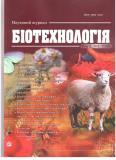ISSN 1995-5537

"Biotechnology" journal Vol. 2, No. 3, 2009
Р. 94-101, Bibliography 40, Russian
Universal Decimal classification: 615.331:579.8+616.9–085
Research and production company «O. D. Prolisok», Kiyv;
Taras Shevchenko Kiyv National University
In the course of shelf-life of the preparation «Apibact» (2 months at +5 °С), introduced into it propolis conserves completely and is not consumed in metabolic processes of the preparation microorganisms. Absorption spectrum of the propolis solution, introduced into the preparation, and calculated absorption spectrum of the propolis, extracted from the preparation “Apibact” after 2 months of its shelf-life, coincide within all interval of absorption wavelengths (240–450 nm). This means that during shelf-life of the preparation all propolis components are conserved and proportion between them remains changeless. That is right at least for main propolis components, responsible for formation of its absorption spectrum, such as galangin, quercetin, kaempferol, chrysin, naringenin, pinocembrin and different ethers of caffeic, cinnamic and other phenolic acids. The fact that about 5% of all propolis, introduced into the preparation, don’t transfer into a supernatant at first centrifugation and remains in the precipitate shows that part of the propolis suspended in the preparation can be linked on hydrophobic sites of cell walls of the preparation microorganisms.
Key words: propolis, microflora, bacterial preparation, Apibact, probiotic, multiprobiotic.
© Palladin Institute of Biochemistry of National Academy of Sciences of Ukraine, 2008

